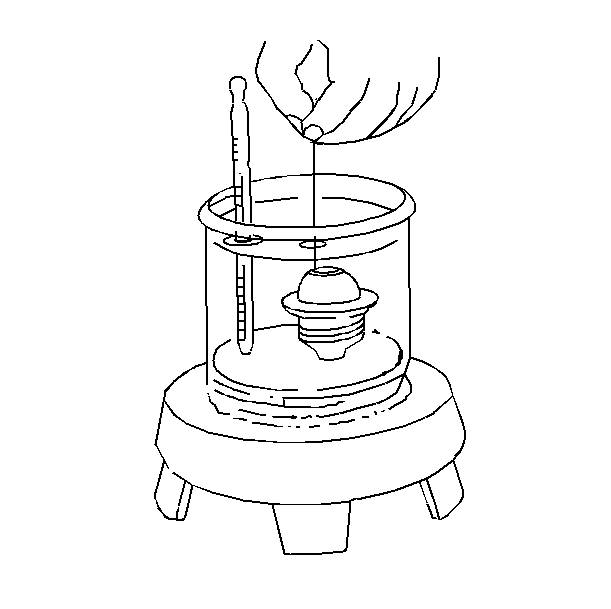Use one of the following procedures in testing for a malfunctioning thermostat.
Tools Required
J 24731 Tempilstick
Thermostat Test Procedure Using Tempilsticks
The coolant thermostat can be tested using a temperature (tempil) stick. The temperature stick is a pencil like device. It has a wax material containing certain chemicals which melt at a given temperature. Temperature sticks can be used to determine a thermostat's operating range, by rubbing 87°C (188°F) and 97°C (206°F) sticks on the thermostat housing.
- Use a tempilstick in order to find the opening and the closing temperatures of the coolant thermostat.
- Replace the coolant thermostat if it does not operate properly between this temperature range.
| • | J 24731-188 tempilstick melts at 87°C (188°F). The thermostat should begin to open. |
| • | J 24731-206 tempilstick melts at 97°C (206°F). The thermostat should be fully open. |
Thermostat Test Procedure Using Glycol
Inspect the operation of the thermostat by suspending the thermostat in heated water.
In order to inspect if the thermostat valve is opening properly, perform the following test:
- Completely submerge the thermostat in heated water. The water should be 11°C (22°F) above the temperature indicated on the thermostat valve.
- Thoroughly agitate the water. Under these conditions, the thermostat valve should open.
- Replace the thermostat if it does not open at this temperature.

In order to inspect if the thermostat valve is closing properly, perform the following test:
The thermostat should begin to open at 87°C (187°F) and fully open at 100°C (212°F).
- Completely submerge the thermostat in heated water. The solution should be 6°C (10°F) below the temperature indicated on the thermostat valve.
- Thoroughly agitate the water. Under these conditions, the thermostat valve should close completely.
- Replace the thermostat if it does not close at this temperature.
The thermostat should be fully closed at 80°C (176°F).
